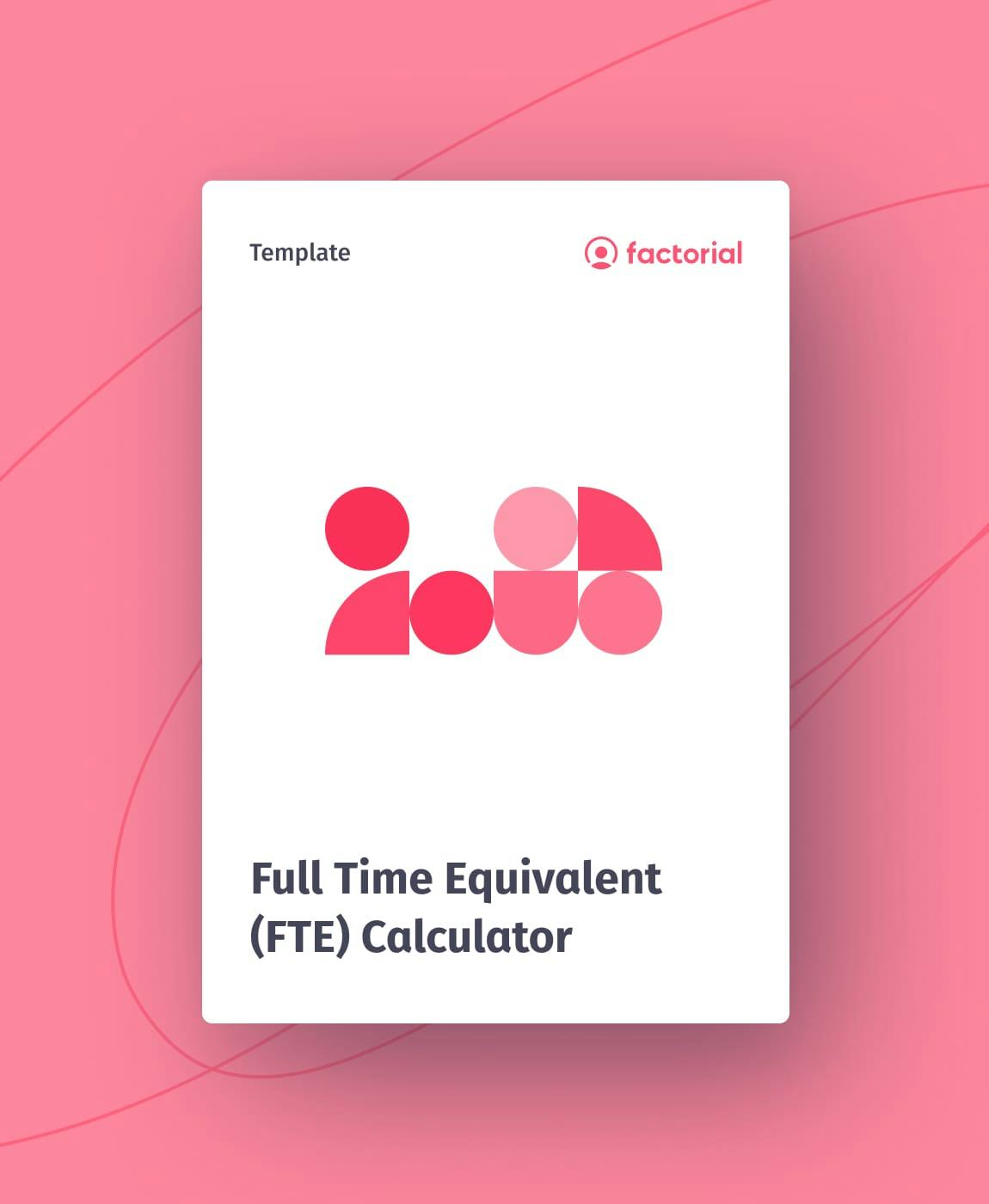Free Full Time Equivalent (FTE) Calculator
🎉 Get Your Free Full Time Equivalent (FTE) Calculator
The full-time equivalent (FTE) calculator allows you to calculate the actual performance of work teams, specific departments or the entire organisation, enabling you to produce consistent reports and accurately track performance over time. It's also an essential tool for accounting purposes and determining wages.
With our Google Sheets model for FTE calculation, you can simplify your internal analysis of the company and see potential productivity levels in a given time. With it, you'll be able to better understand the organisation's demands and what needs to be changed internally to make the business even more productive.
Download your FTE calculator today by simply completing the form.

What is a Full-Time Equivalent Calculator?
Full-time equivalent calculators are used to determine the equivalent number of full-time employees you have in your business. While traditionally, many companies comprised a majority of full-time employees, a shift toward normalising part-time work and job shares, plus the many industries favouring part-time or shift workers, has seen flexible work hours grow in popularity.
As a result, keeping track of productivity levels among your company's employees can be a challenge. Calculating the cost of each employee and their relative output suddenly because a bit more complicated when you're managing employees working different numbers of days, hours, seasons, or shifts.
Our Full-Time Equivalent Calculator Explained
Our full-time equivalent (FTE) calculator uses a simple equation that takes the actual hours worked by a number of employees and calculates the equivalent number of full-time employees that it represents.
To work this out, you'll need to input three variables:
- Number of employees.
- Part-time hours worked per week.
- The time period (in weeks).
We'll then use these figures to calculate the total hours worked per year. This is then divided by the total number of hours worked by a single full-time worker over the course of a year, which will give you the number of full-time equivalent employees.
It is worth noting that the average full-time worker works an average of 2080 hours per year. This is based on presumed average weekly hours worked as 40 hours and doesn't factor in annual leave.
It's easy to update our FTE tool by clicking the full-time equivalent total and adjusting the number of full-time hours you are dividing by. To calculate this figure, you should multiply the maximum hours authorised in your business by the 52 weeks in a year.
Examples of FTE Value:
If your business defines a full-time workweek as 40 hours, then:
- An employee working 40 hours per week would have an FTE value of 1.0.
- A part-time employee working 20 hours per work would have an FTE value of 0.5.
How to Use This Template
*Please note: You only fill in the pink fields
Before you begin, to calculate FTE, it's helpful to have prepared a list of each employee's scheduled hours so you can group them if necessary.
You'll see an example of how to do this filled in on the calculator already. Don't worry if all of your employees are on different schedules; you'll have to add a row for each employee.
- Indicate how many employees work at your company or on a particular schedule.
- Fill in the schedule details by adding how many hours they work a week.
- Add how many weeks they work for across a year - this is particularly useful for teaching staff.
- Our model will then instantly calculate the Full-Time Equivalent!
Types of Employees to Include and Exclude
When making an FTE calculation, you must include all full-time and part-time employees. However, excluding contractors and any temporary workers from the business would be best.
What is FTE?
FTE is a metric you can use to track your employees. It's different from headcount because instead of just reporting on the number of people in your business, it uses 'hours worked' to give employees a comparable value you can use to accurately determine other metrics like individual performance, output, team productivity, and ROI.
Strictly, FTE is a unit of measurement, sometimes represented at '1.0 FTE', and is defined as the number of hours a full-time employee works for an organisation.
FTE calculations can also be used when preparing budgets, forecasting staffing requirements, and fairly calculating part-time employee salaries. It's also a valuable metric to measure your headcount against profits or output.
Standardising your FTE model can help you maintain employee consistency across your business and be particularly useful for allocating resources for specific projects. For example, project managers can use FTE to predict workloads and labour costs for ongoing projects using the estimated FTE number. The correct number of employees can then be assigned to the project depending on each individual employee's capacity.
Benefits of Using an FTE Calculator
- Better Understand Your Workforce - Using an FTE calculator, HR departments can convert the hours worked by part-time employees into hours worked by full-time employees. This is useful for determining outputs, budgeting, and scheduling your workforce.
- Better Plan Your Projects - an FTE calculator is an excellent indicator of the productive capacity of your company as it indicates how much people-power a company has at a given time.
- Respect Legislation: with the help of the FTE calculator, you'll have a better overview of your staff and ensure you comply with the labour laws regarding various contract types.
- Performance Analysis - a full-time equivalent calculation can help HR managers better understand your organisation's needs and allow them to make better decisions regarding personnel management. It can also help other teams with financial forecasts and determining revenue and profits per employee.
- Make Data-based Decisions - Identify whether your company needs to restructure, hire or reduce its staff. It can also help with the cost-benefit analysis of hiring a part-time or full-time employee.